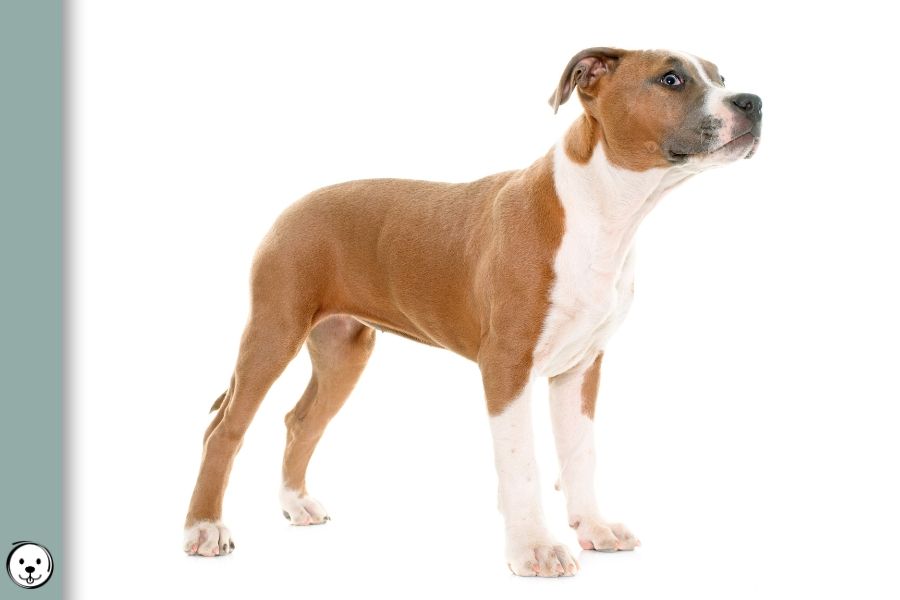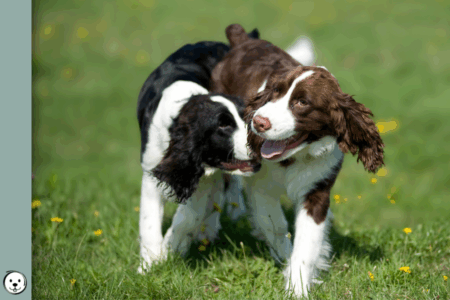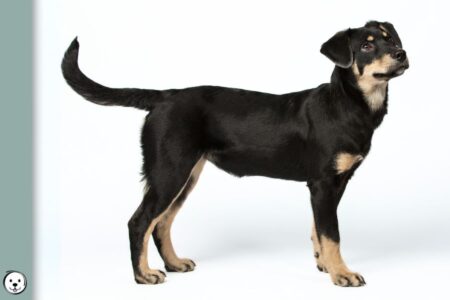Blue sable dogs have a sable pattern with diluted black eumelanin. They have a phaeomelanic base color with varying amounts of blue hair tipping, mostly concentrated along their upper body.
Sable Colors
Dogs need to be able to express their sable allele (we shortened the new allele names ASIPDY and ASIPSY to Ay). They have to be ky/ky combined with either a mask Em/- or a wild type allele E/-.
The color of their eumelanin sabling is determined by the B locus and D locus.
The color of their phaeomelanin is determined by red intensity.
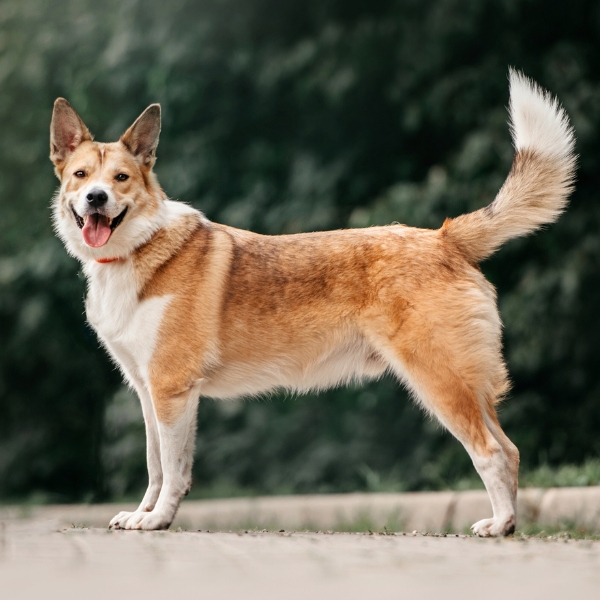
Em/- or E/- ky/ky Ay/- B/- D/-

Em/- or E/- ky/ky Ay/- b/b D/-
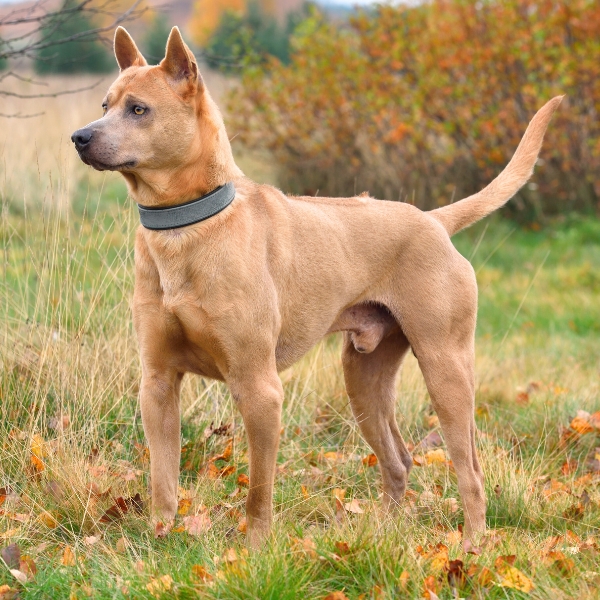
Em/- or E/- ky/ky Ay/- B/- d/d

Em/- or E/- ky/ky Ay/- b/b d/d
Blue-Based Sable Pattern
Dogs with a blue sable pattern will have a predominantly phaeomelanic coat with varying amounts of blue-tipped hairs on top, causing anything from little to heavy shading.
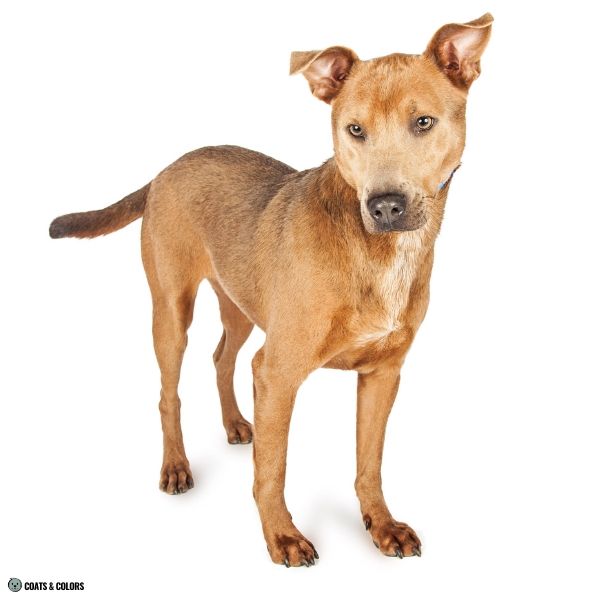
Sable is an A locus pattern. It is responsible for color placement.
It tells pigment cells where to make phaeomelanin and where to make eumelanin.
If you don’t know what that is, read more about pigment types.
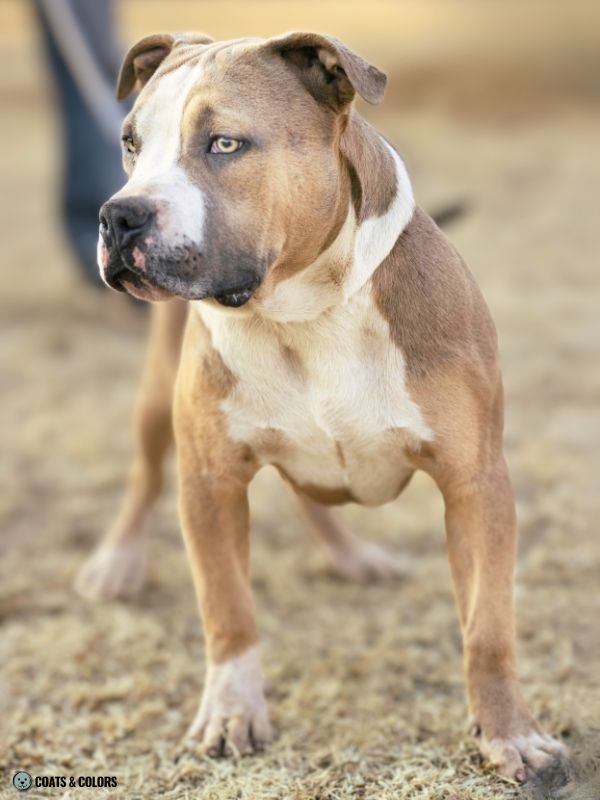
Dogs with any kind of blue-based pattern have diluted black eumelanin pigment (B/- d/d).
One dominant B at the B locus is enough for them to have black eumelanin. But the d/d at the D locus then dilutes the black pigment to blue.

The color of diluted black ranges from a pale silvery gray to a very dark slate gray. Some dogs can have very dark blue pigment so that their nose may look almost black.

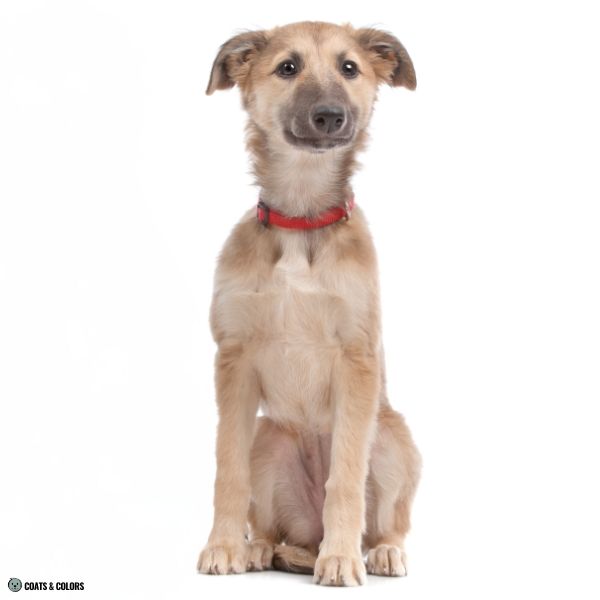
Their blue eumelanin also affects their nose, whiskers, eye rims, lips, nails, paw pads, or skin pigment which will all be gray. Blue dogs also tend to have on average lighter eyes (but many breeds that accept blue still want them to have brown eyes so breeders select for dark eye colors).
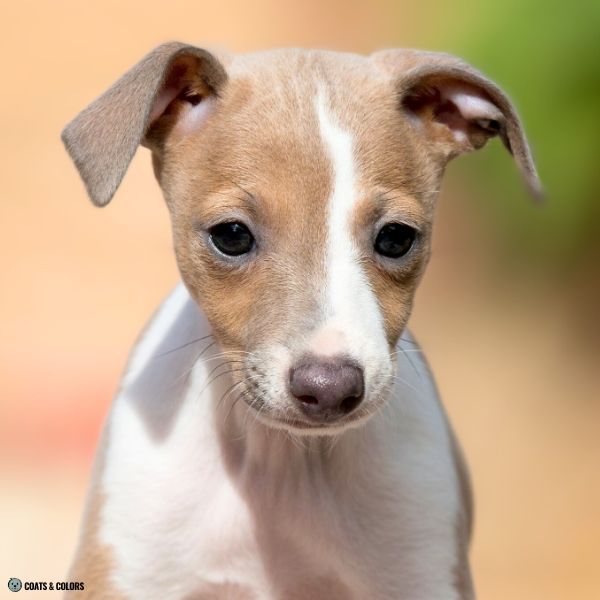
A blue fawn dog’s base intensity can be anything from pale cream to deep red.
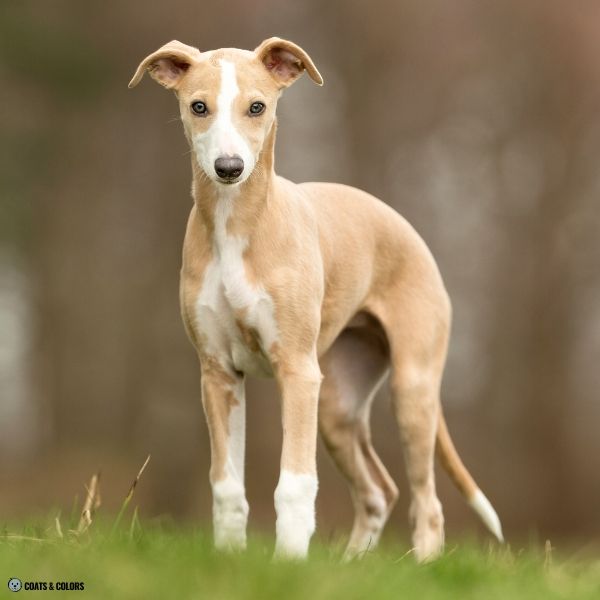

The D locus is not thought to affect phaeomelanin. However, quite some dogs with color dilution also show some lighter phaeomelanin next to their black-based siblings.
But this is certainly also partly due to the fact that the tips of their hair are gray and not black.

Blue sable shading is mostly concentrated along the dog’s upper body. If sabling is visible it is mostly found between on the forehead, along the back, maybe extending to the top side of the tail.
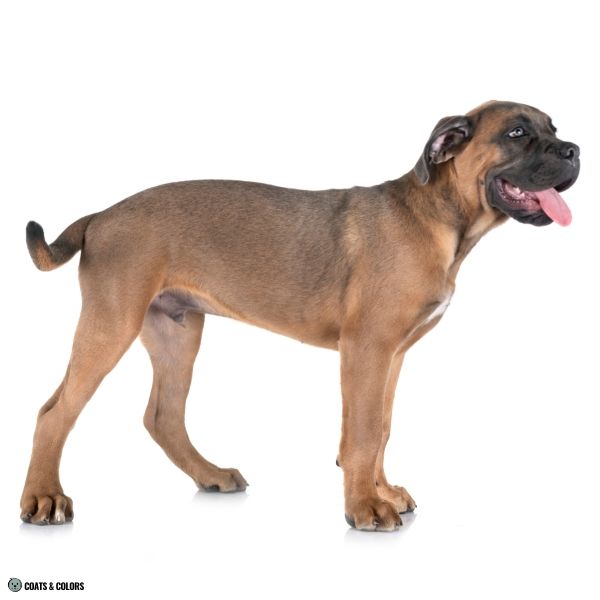
Sabling causes grayish hues on the phaeomelanic base color. Depending on the amount of eumelanin in the coat this can cause little or lots of blue overlay along the back of the dog.
Even clear sable dogs always have some eumelanin in their hair tips. In blue-based sable, this can give an almost metallic silvery sheen to their coat or look like a dull fawn color.
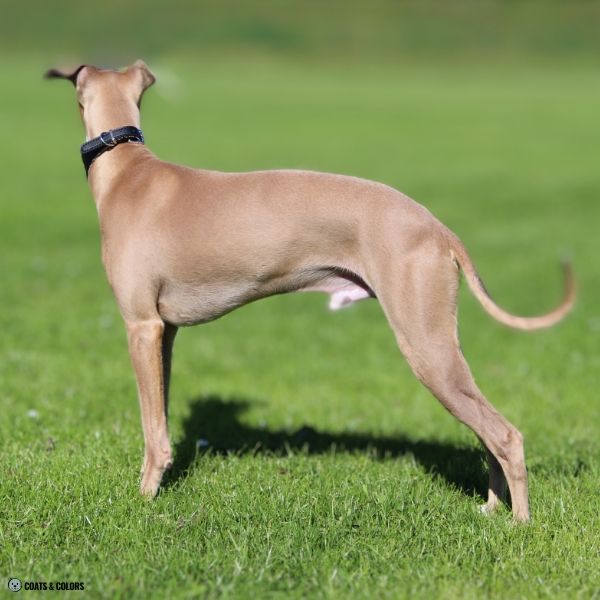
Heavier blue shading (especially in long-haired dogs) can also cause gray ear fringes, form a darker half-collar around the neck, give lots of dark overlay, or cause a widow’s peak on the sable dog’s forehead.
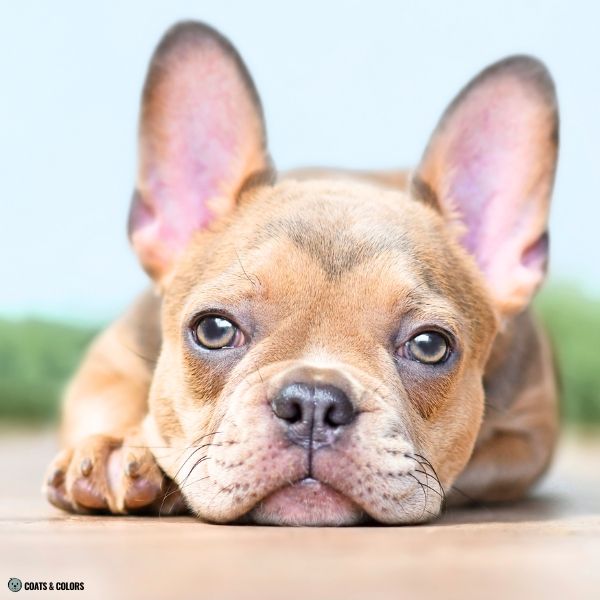
However, blue hair tips can sometimes be barely visible against the yellow or red background color.

However, a typical sable pattern should not give any dark face markings below the widow’s peak. And it should not produce any dark shading down the upper arms and front legs.
But again, the actual placement of blue-tipped hairs can be hard to see in some red coats.

Some blue sable patterns end up very solid phaeomelanic with barely any visible eumelanin shading. In some cases, it can be hard to tell them apart from a blue-based recessive red.
Just remember, that recessive red dogs can not have dark whiskers.
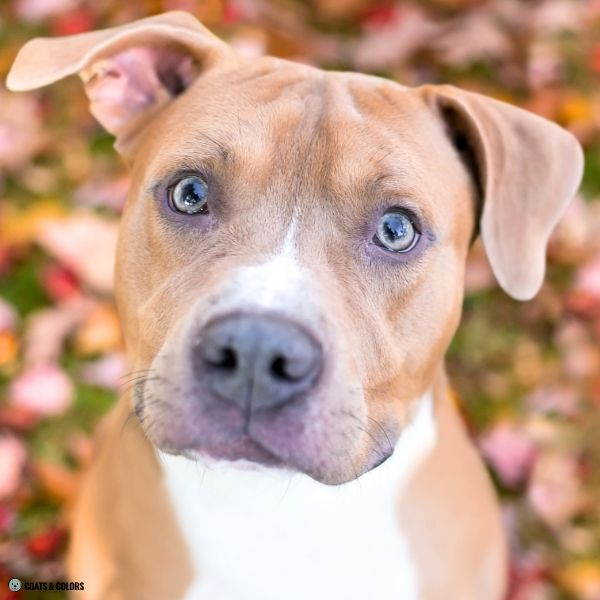
Blue-Based Sable Puppy Coat
Young sable puppies are typically born with at least some gray overlay which may later recede or not.

Their nose pigment can look almost brownish at first.

It can take some time for all the blue overlay to clear. The gray hair tips may or may not return, depending on whether the dog ends up with a clear sable or a shaded sable pattern.
But it’s very normal to see some residual face or leg shading in young blue fawn dogs.
Breed Terms
Sable with blue eumelanin can happen in breeds that have both traits in their gene pool such as Chihuahuas or Border Collies. However, there aren’t many breeds that have diluted color[2,3].
In Chow Chows, the combination of sable and diluted black is called cinnamon. In Shar Peis and Thai Ridgebacks, it is isabella. In Cane Corso, it is called formentino. But most breeds just call it blue fawn.
Blue fawn is a standard color in Whippets, Greyhounds, and some other sighthounds. It is also common in bully-type breeds such as American Staffordshire Terriers and Pitbulls.


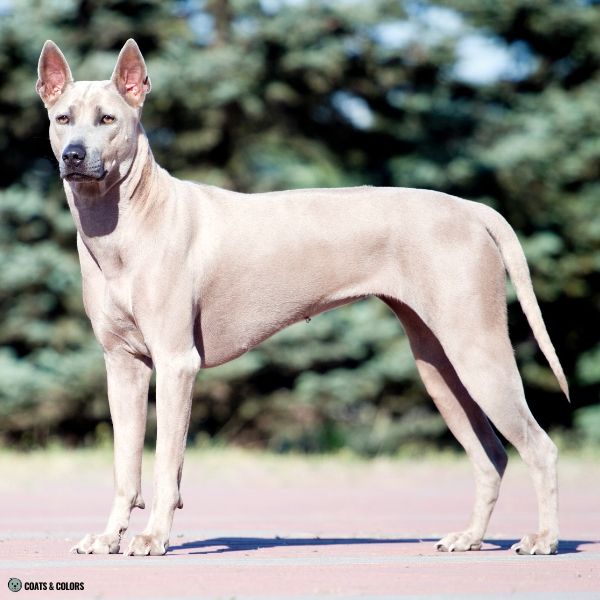
Blue sable can also happen as a mismark since color dilution is a recessive trait. The recessive d variant occurs at low frequencies in many traditionally black-based dog breeds[1].
For example, some Belgian Malinois are blue sable (with also turns their mask blue!). And although not a an accepted combination, there are some fawn Great Danes with a blue-based pattern.
It also happens, albeit rarely, in Boxers or Rhodesian Ridgebacks.
Other breeds introduced blue eumelanin to produce new “fancy colors“. One very common example that comes to mind are blue fawn French Bulldogs which is not a thing in standard Frenchies.
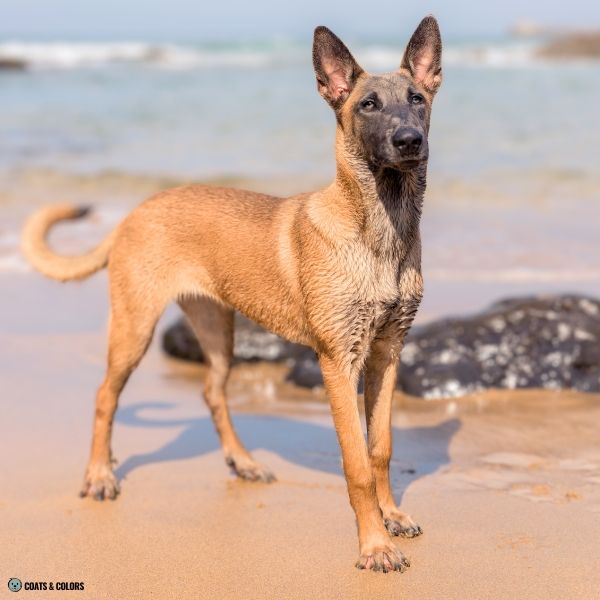


Blue-Based Sable Variations
Some other traits can affect how a blue sable pattern will look like.
- Blue sable dogs can have any coat type and texture.
- Some countershading can lighten the phaeomelanin base color on the ventrum.
- White spotting can cover some or most of the blue sable pattern.
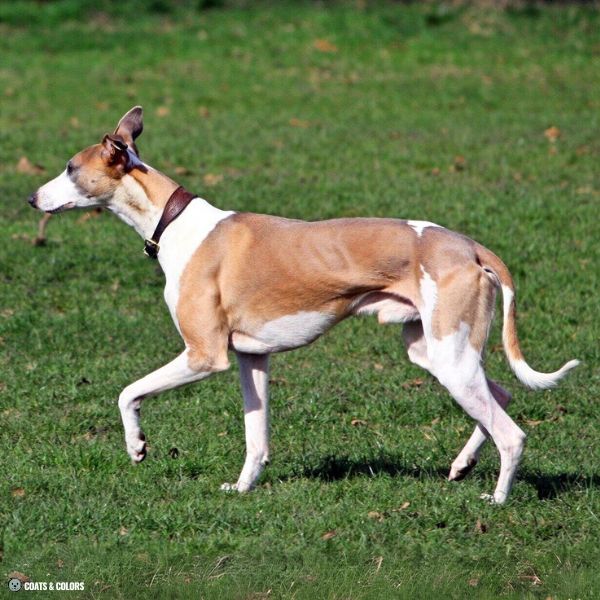
- Blue sable dogs with an Em variant may have a blue mask.
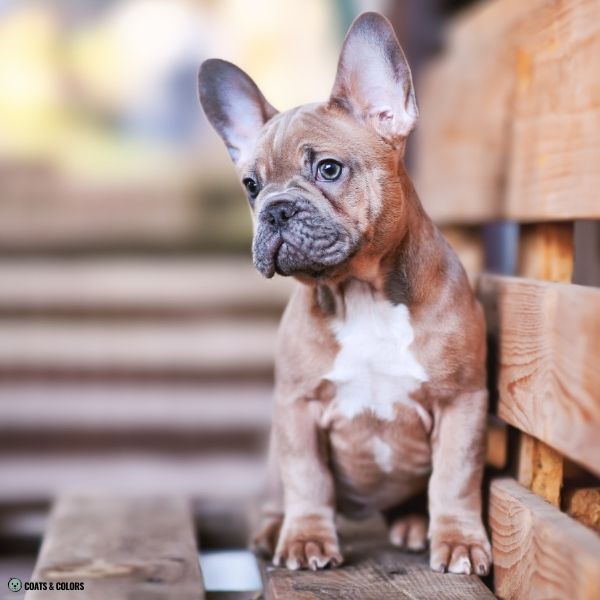
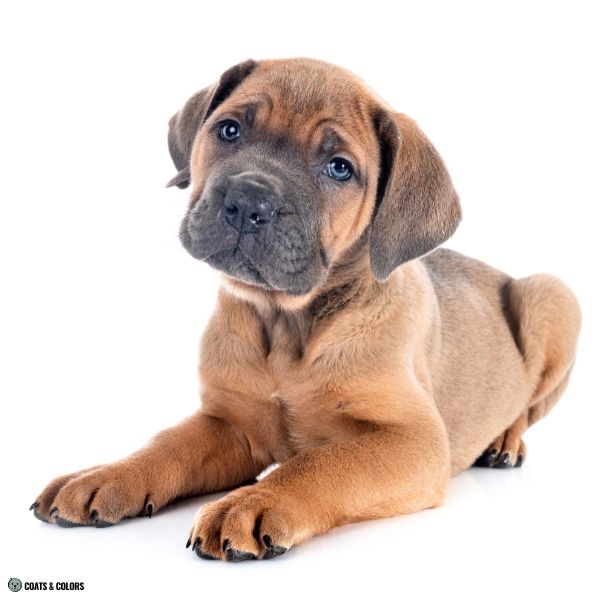
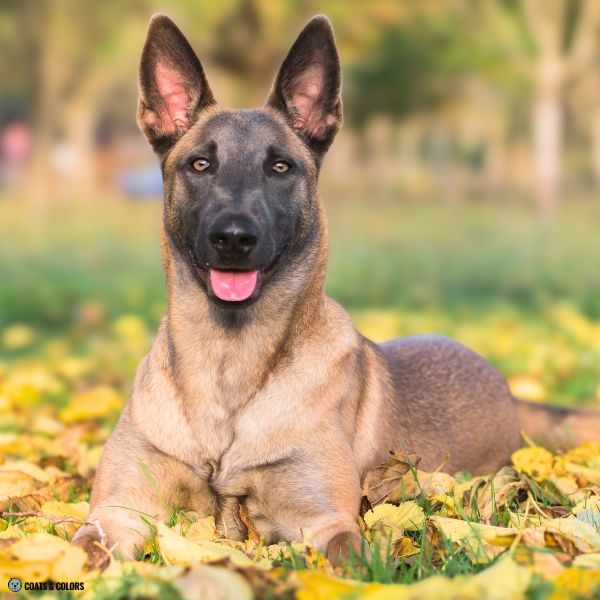
- Brindle on a blue sable dog will cause blue stripes on top of their sable pattern. Striping patterns can be very sparse or so dense that the dog looks almost solid blue.

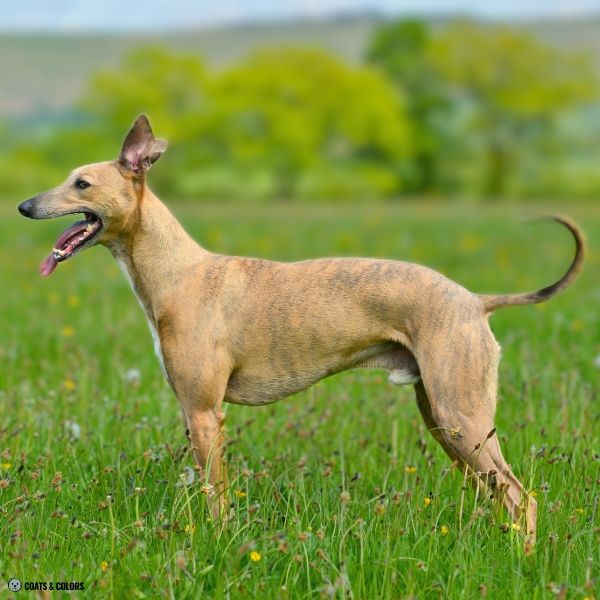
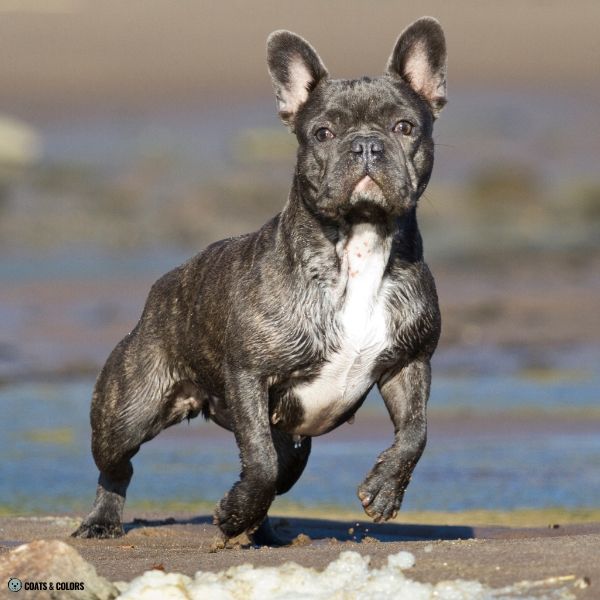
- Some dogs are sable and merle. However, they need at least some eumelanin to express a merle phenotype. On a clear blue sable coat, their merle pattern will be hidden!
- Progressive graying can cause eumelanin fading in furnished dogs. This lightens the blue hair tips in a sable pattern to an even lighter whitish silvery color and makes it even less noticeable.
- Domino traits such as Northern domino can remove much of the blue overlay from a sable pattern. It gives white whiskers and may also lighten the phaeomelanin and give pale roots or lighter undercoat.
- Seal happens when a dominant black dog’s solid coat is not as opaque as it should be. In some dogs, a hidden “ghost sable” bleeds through, giving a very reddish coat.
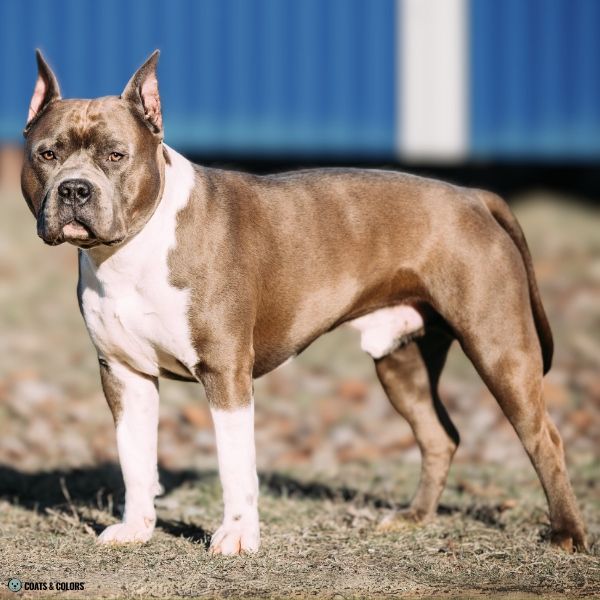
Sable Lookalikes
If you’re new to coat color genetics, you may have a hard time seeing the difference between a sable and an agouti pattern. And blue-based patterns or lots of shading on young dogs don’t make it easier.
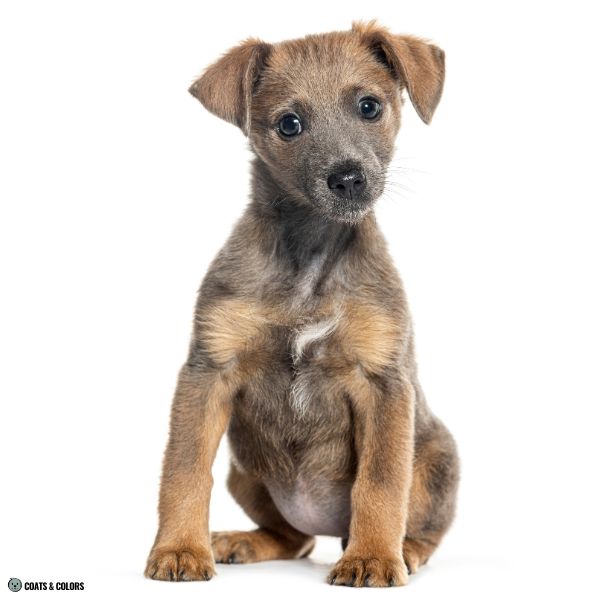
Next, creeping tan and some rare blue agouti domino as well as as some blue tan point domino patterns can give a widow’s peak and a mostly clear tan face with pale phaeomelanin.
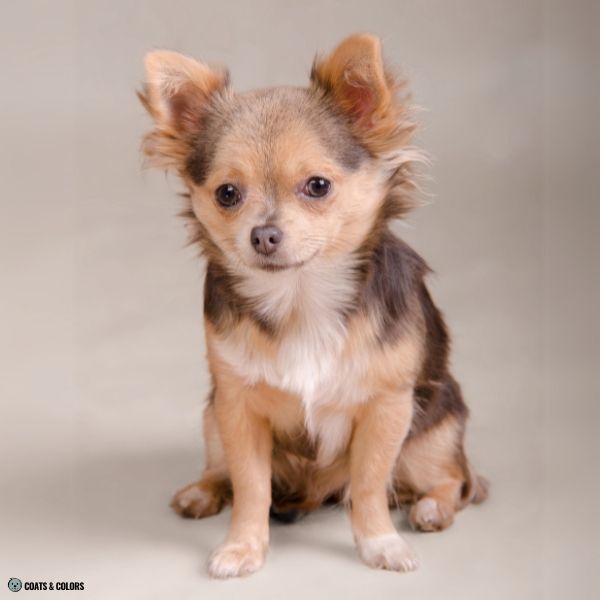
Recessive red (e/e) can be hard to tell apart from clear sable. It does not help that recessive red dogs often have a pale nose that may look blueish-brownish even in a black-based pattern.
Remember, recessive red causes white whiskers. But so can sable domino.
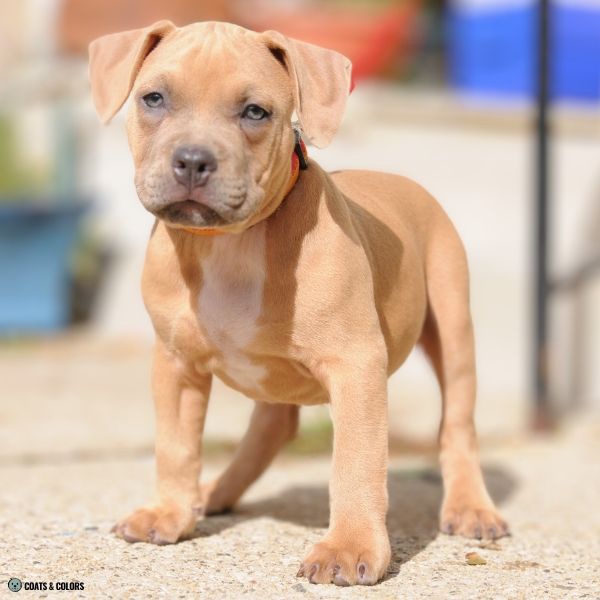
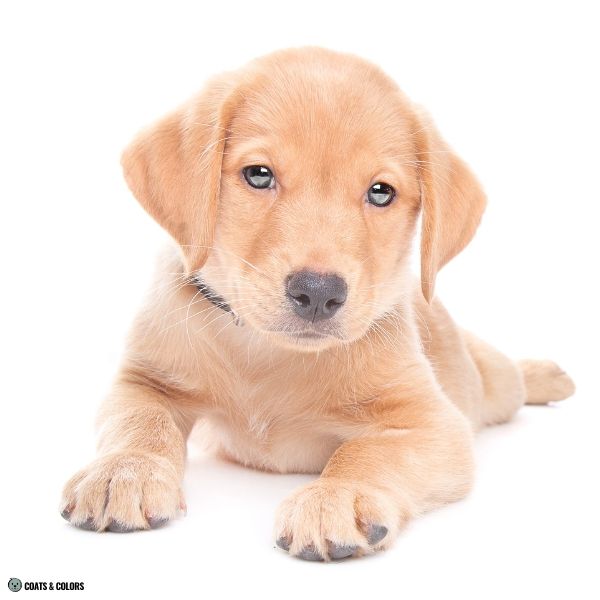
Blue-Based Sable Genetics
Coat colors are determined by pigment distribution and pigment colors.
Pigment Distribution
The A locus, K locus and E locus determine the basic pigment distribution.
-
B/-
d/d-
Ay/--
ky/ky-
Em/--
blue sable
mask
-
-
E/--
blue sable
-
-
eG/-
eA/--
blue sable
domino
-
-
-
-
A locus
First of all, dogs with a sable pattern have a sable variant (Ay) at their A locus.
K locus
To actually express their A locus pattern, they also need to be homozygous for the wild-type K locus (ky/ky).
With a brindle allele (kbr/-), the blue sable pattern will have blue stripes on top.
E locus
Finally, the E locus also has to enable normal pattern expression.
Diluted sable dogs can have a blue mask (Em/-) or they can have a wild-type allele (E/-). Some dogs that appear to be clear sable might actually be sable domino (eG/- or eA/-).
Pigment Colors
Blue-based sable dogs have diluted black eumelanin but they can have any shade of phaeomelanin.
Eumelanin
All of the eumelanin in a blue sable pattern will be diluted black (B/- d/d).
Intensity
The shade of phaeomelanin can vary depending on red intensity.
While color dilution should only turn the black hair tips to blue, it can also lighten phaeo intensity in some dogs. The reason behind this is not really understood.

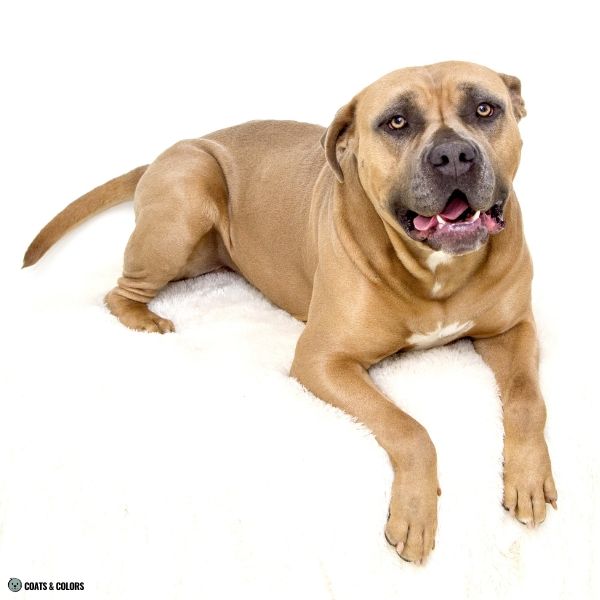
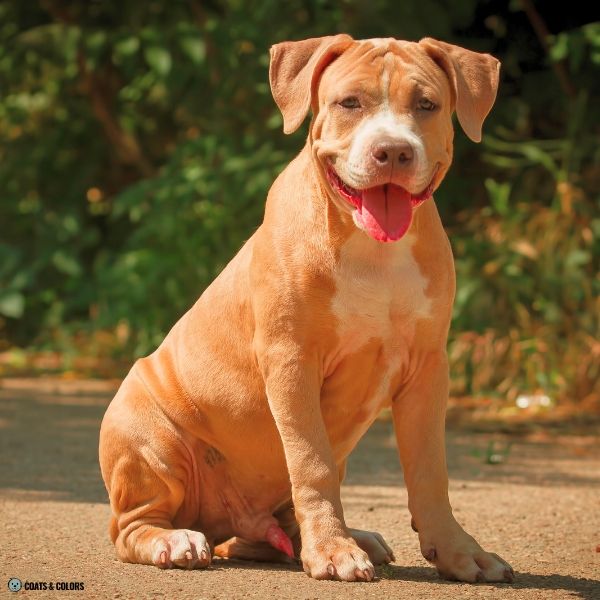
The Sable Allele(s)
In the wild-type A locus, the agouti pattern, dogs have an overlay of banded hairs due to pigment cells alternating between eumelanin and phaeomelanin synthesis during hair growth.
Sable is essentially a mutant version of the wild type pattern with upregulated phaeomelanin banding. In a blue sable pattern, the hairs still start with a blue hair tip but then only make phaeomelanin. This turns the wild type banded hairs into the tipped hairs or “sabling“.
The gene variant responsible for a sable pattern is found at the A locus.
Legacy testing reports both clear and shaded sable as Ay.
Only newer testing methods (see UC Davis) can distinguish between two versions of sable.
Dogs can test as clear sable (Ay = ASIPDY) or shaded sable (Ays = ASIPSY).
ASIPDY > Ays
ASIPSY > aw
ASIPAG > asa
ASIPBS > at
ASIPBB > a
ASIPa
With modern testing, each A locus allele represents a haplotype with a hair cycle promoter (HCP) and a ventral promoter (VP). And the hair cycle promoter HCP1 is unique to the sable pattern.
This HCP1 promoter stimulates phaeomelanin banding and reduces eumelanin banding, resulting in a distinct pattern in favor of blue hair tips instead of blue hair bands.
Most sable-patterned dogs are born with lots of dark overlay in their puppy coat.
A shaded blue sable will go through a pale phase before its shading returns. However, dogs with a clear sable pattern (Ay/Ay) are supposed to lose most of their shading.
In adult coats, a very clear sable may even resemble recessive red (e/e)!
On the other hand, intermediate phenotypes like in Ay/at or Ay/a dogs can also sometimes produce more eumelanin shading than expected. Which can be hard to see on a blue-based pattern.
Learn More
Links
[1] Dreger et al. (2019). True Colors: Commercially-acquired morphological genotypes reveal hidden allele variation among dog breeds, informing both trait ancestry and breed potential. PLoS ONE 14(10): e0223995. https://doi.org/10.1371/journal.pone.0223995
[2] American Kennel Club (AKC): Dog Breeds Overview.
[3] Fédération Cynologique Internationale (FCI): Dog Breeds Overview.

Hi! I’m Steffi. I am a biologist and a big time dog nerd. You are curious about coat color genetics? You’ve come to the right place! Read more.

